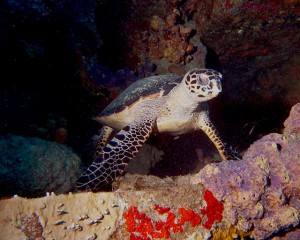Although I have managed the last few months getting out to dive, June and July are often months I have to miss. It’s one of those good news-bad news situations. The summer is always a peak dive time because conditions are the best barring storms of course. The water temperature is in the 80s, seas are generally calm, and visibility is good to excellent. The surge in divers means full boats which is why I don’t always get to go along. Since direct family members of the staff don’t pay, our understanding is we won’t take the place of a paying diver. As I think I mentioned in a previous post, the past year has been an anomaly because of extended high-to-maximum bookings until more overseas locations re-open to tourists. I’ve seen notices of re-openings and am not certain of how wide-spread those are.
On the up-side of divers coming down, my bud, Richie Kohler, and some of his friends were in Key Largo the past few days and we all had lunch together yesterday. It’s a guaranteed fun time and the big news is they are prepping for a September dive on HMHS Britannic again with the even more exciting news they will finally be allowed to penetrate the wreck. That has been raging controversy for years. There is a list of items they hope to recover; the success of which will depend on many variables, most of which will be out of their control. The only drawback at the moment is none of the previous media companies are willing to underwrite the expedition. If something great does come out of it, there will of course be likely takers as the camera/film experts going all have history with the companies in question. They are experienced in what kind of footage will appeal and their quality is well-known. They will shoot hundreds of hours of footage that can be edited accordingly if someone picks up the documentary.





